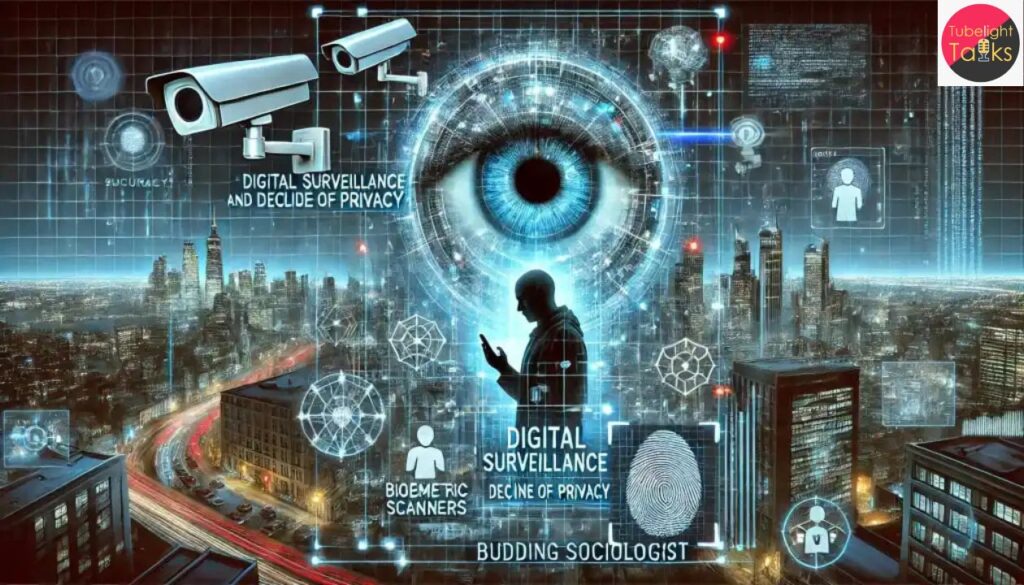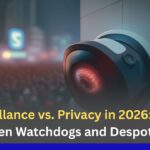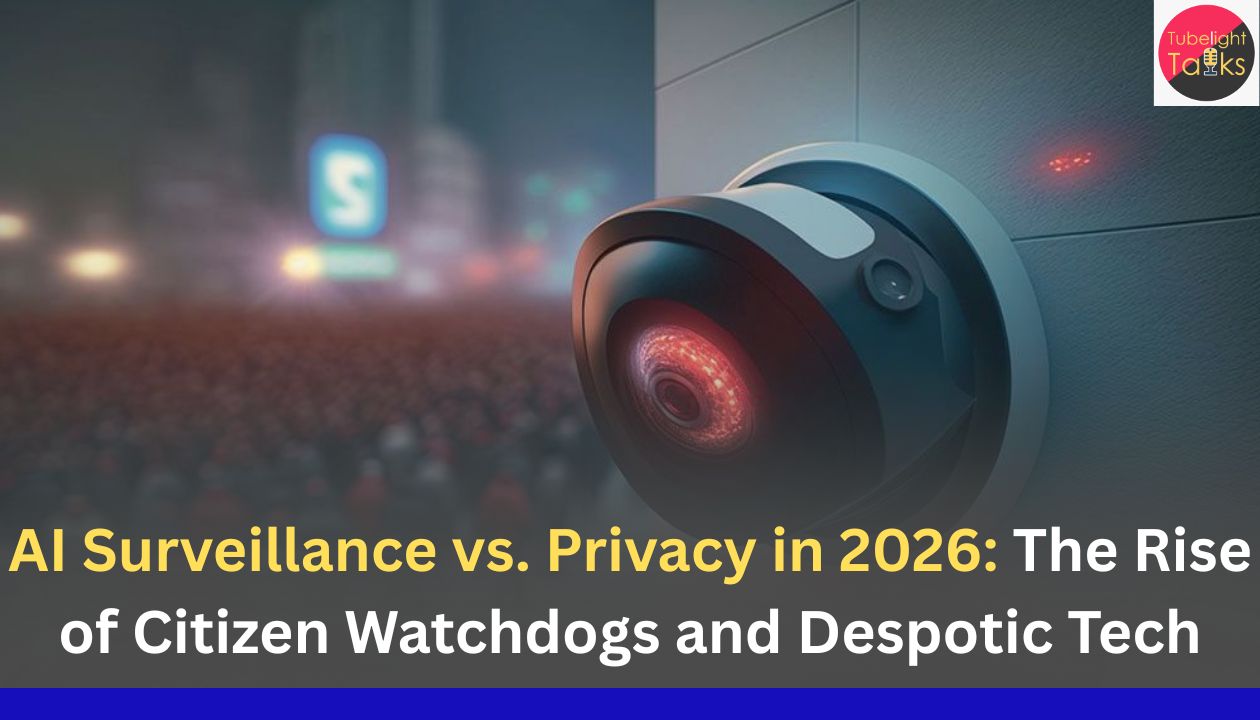The Rise of Citizen Watchdogs: In the year 2026, surveillance looks very different. Smart cameras powered by AI monitor our streets, workplaces, and even online interactions. Meanwhile, everyday citizens wield similar tools—becoming digital watchdogs of governments, corporations, and each other. This dual-edged shift brings hope for accountability but also deep anxiety for privacy. Who will control the cameras? Who will decide when and how they watch? In this blog, we’ll explore the evolving landscape of AI-driven surveillance, the role of citizen watchers, the risks for privacy and freedom—and how we might navigate this terrain with wisdom and balance.
The New Era of AI Surveillance
What’s changing
Advanced AI systems are now embedded in video-cameras, drones, biometric scanners, social-media analytics. They’re smarter, more autonomous, and more pervasive. For example, agents in security operations centres (SOCs) are using multiple AI modules to triage, investigate, and respond to incidents—reducing false positives and response times dramatically.
Why it matters
With these systems, what was once human oversight becomes machine-driven decisions. That means surveillance is no longer passive; it’s active, predictive, even anticipatory. The power dynamics shift: those who control the data and the algorithms may control society.
Trends in 2026
- According to Forrester, the first public breach caused by autonomous (“agentic”) AI is expected in 2026—increasing urgency around governance and privacy.
- Some regions are imposing new disclosure obligations: e.g., the Connecticut Data Privacy Act requires entities from July 2026 to clearly state if personal data is used to train large-language models.
- The research paper “Emergent AI Surveillance…” highlights how person re-identification systems can single out individuals even when not designed to do so, raising major regulatory questions.
Citizen Watchdogs: Power to the People
Who are they?
Citizen watchdogs are individuals or community groups using tools—smartphone apps, DIY cameras, social-media analytics—to monitor everything from political corruption to corporate mis-behaviour. The promise: transparency, accountability, democratic oversight.

Opportunities
- Increased civic engagement: Technology empowers citizens to shine light where institutions may be blind or uninterested.
- Faster detection of wrongdoing: The same AI tools used by authorities can be used by the public.
- Decentralised oversight: Less reliance on single power-holders if many people participate.
Risks
- Lack of regulation or ethical standards: Who ensures watchdogs follow rights, fairness, due process?
- Vigilantism and errors: False positives, mis-identification, mob justice become real dangers.
- Data-slavery: The same systems could be harnessed to monitor citizens under the guise of citizen-watchdog-initiatives.
The Privacy Erosion
What’s being lost
Privacy is going beyond the right to be left alone—it becomes about control of your digital footprint, your identity, your presence in both physical and virtual worlds. The growth of “luxury surveillance” devices (e.g., smart glasses with hidden cameras) shows that current laws were never designed for this scale.
Structural issues
- Lack of effective regulation: Laws are patchy, often reactive rather than proactive.
- Data aggregation + AI = potent privacy risk: Even anonymised data sets can become identifiable through AI-driven re-identification.
- Cultural & geographic variance: A study found that acceptance of AI-surveillance in public spaces varied hugely—higher in China, lower in Europe/US.
Real-world example
Clearview AI, a company collecting billions of face-images for law-enforcement, is now facing criminal complaint in Austria for suspected violations of biometric-data laws.
Despotic Tech: The Dark Side of Surveillance
When tech is mis-used
Surveillance tools in the wrong hands—or without checks—become instruments of control, oppression and fear. Machine-driven systems may disproportionately target marginalised groups, create chilling effects on free speech, or enable mass monitoring without consent. The “anti-facial recognition movement” illustrates rising push-back globally.
Structural power shift
- Governments may nationalise telecom/IoT infrastructures to control data flows.
- Citizen-watchdog tech may fold into surveillance regimes under the guise of “public safety” or “efficiency”.
The challenge
Balancing safety, accountability, and freedom—without letting tech become the master instead of the servant.
Finding Balance – Rights, Tools & Governance
What needs to be done
- Transparent governance: Clear rules on when, where, how surveillance is used; who is held accountable.
- Privacy-by-design: Embedding privacy safeguards, anonymisation techniques, audit trails into systems.
- Ethical citizen-watchdog frameworks: Guidelines that prevent misuse, protect rights, build legitimate oversight.
- Empower individuals: Digital literacy, consent awareness, rights to access, correction, deletion.
Navigating 2026
We are at a crossroads. The tools for empowerment are the same tools for domination. How society chooses to govern, regulate and adopt them will decide whether surveillance is a force for good or a descent into control.
From Surveillance to Service: Sant Rampal Ji’s Timeless Truth
In the awakened wisdom of Sant Rampal Ji Maharaj, we learn that one should not cause any harm to others for one’s selfish interests. One should speak politely. In the context of AI surveillance, this insight resonates deeply. When the powerful collect data about the many, or when citizens carry surveillance tools without care for dignity, harm creeps in. True guardianship comes from protecting others—not exploiting them. Sant Rampal Ji Maharaj teaches that human life is incomplete without spiritual knowledge. When technology advances but compassion retreats, we risk losing more than just privacy—we lose humanity. In our surveillance-rich age, let us remember: the purpose of vision is not to see all, but to serve all.
Also Read: The Future of Artificial Intelligence and Its Impact on Jobs and Society
FAQ related to AI Surveillance vs. Privacy in 2026
Q1. Is AI surveillance inevitable in 2026?
Not necessarily. The technology is advancing rapidly, but the systems, laws, and practices are still evolving. Citizens and civil society still hold the power to shape these choices.
Q2. Can citizen-watchdogs really protect privacy?
They can, if they act ethically, transparently, and within the right frameworks. But without safeguards, they might inadvertently become part of the problem.
Q3. What rights do individuals have regarding being surveilled by AI?
Depending on jurisdiction, rights may include access to data about oneself, correction, deletion, and in some cases consent before biometric processing. For example, in Connecticut individuals will have disclosures when their data is used for LLM training from July 2026.
Q4. How can businesses deploy surveillance without violating privacy?
By adopting privacy-by-design practices: minimising data collection, informing individuals, limiting purpose, providing transparency, and enabling oversight and audit trails.
Q5. What can a regular person do to protect their privacy in this era?
Be aware of where and how you’re being recorded or monitored. Ask organisations what data they hold about you, and how it’s used. Advocate for strong laws, transparency and accountability. Support technologies and policies that anonymise, encrypt, and limit unnecessary surveillance.










